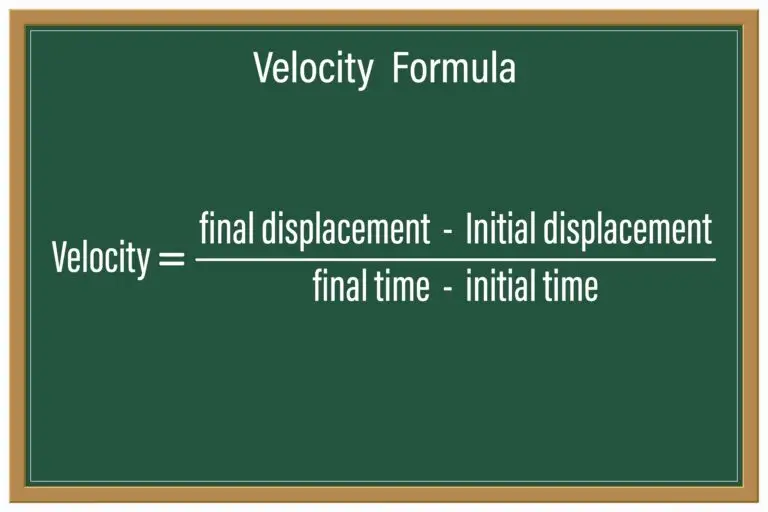Velocity

Table of Contents
What is Velocity?
Velocity deals with the motion of objects without considering the forces that cause the motion. It has both magnitude and direction. The magnitude aspect of velocity is commonly referred to as speed, indicating how fast an object moves. The direction component specifies the path along which the object is moving.
Velocity is the rate at which an object’s position changes over time. It tells us how fast the object travels and the direction in which it moves. While speed is a scalar quantity that only gives the magnitude of motion (how fast something moves), velocity provides a more comprehensive description of motion. For example, saying a car is moving at 60 kilometers per hour (km/h) describes its speed, but moving at 60 km/h to the north specifies its velocity.
Units of Velocity
Velocity, a vector quantity that describes the speed and direction of an object’s motion, is commonly measured in the International System of Units (SI) as meters per second (m/s). This unit directly conveys how many meters an object travels in one second, clearly indicating its speed in a specific direction.
- Meters per second (m/s): This is the SI unit for velocity, emphasizing its role in scientific and engineering contexts where precise measurements and standardization are crucial.
Besides the SI unit, velocity is often expressed in other units, especially in everyday contexts:
Kilometers per hour (km/h): This unit is widely used in road transport and weather reporting. It indicates how many kilometers an object travels in one hour and is common in countries that use the metric system.
Miles per hour (mph): Predominantly used in the United States and the United Kingdom, mph shows how many miles an object travels in one hour. It’s the standard unit of speed on road signs and in automotive industry specifications in these regions.
Speed vs. Velocity
Speed and velocity are related concepts in physics, both describing aspects of motion, but they have distinct differences that are important to understand:
Speed:
- It is a scalar quantity, which means it only has magnitude (size or amount) and no direction.
- Speed tells us how fast an object is moving but not the direction of the movement. For example, if a car travels 60 kilometers per hour (km/h), this number represents the car’s speed.
- Speed is typically measured in units like meters per second (m/s), kilometers per hour (km/h), or miles per hour (mph).
Velocity:
- Velocity is a vector quantity, which means it has both magnitude and direction.
- It describes how fast an object is moving and its direction. For instance, stating that a car is moving at 60 km/h to the north provides information about its velocity.
- The standard unit for velocity is meters per second (m/s), but like speed, it can also be expressed in km/h, mph, or other units, with the direction included in the description.
Types of Velocity
Average Velocity
- Average velocity is calculated by dividing the total displacement (the straight-line distance from the starting point to the ending point) by the total time taken to travel that distance.
- It provides a broad overview of an object’s motion over a specified time interval, indicating the average rate and direction of movement.
- For example, if a car travels 300 kilometers north over 5 hours, its average velocity would be 60 km/h north, regardless of any changes in speed or direction during the trip.
Instantaneous Velocity
- Instantaneous velocity refers to the velocity of an object at a particular moment in time.
- It is obtained by determining the derivative of the object’s position with respect to time, which essentially calculates the rate of change of position at a specific instant.
- Instantaneous velocity gives a precise measurement of how fast and in what direction an object is moving at any given point in time. For instance, the speedometer reading in a car at a particular moment reflects the car’s instantaneous velocity.
Positive and Negative Velocity
Positive Velocity
When we say that an object has a positive velocity, it moves in the direction defined as positive within the chosen coordinate system. For example, if the positive direction on a linear track is to the right (eastward if using cardinal directions), an object moving to the right has a positive velocity. This convention helps understand the object’s direction of motion relative to a defined reference point.
Negative Velocity
Conversely, a negative velocity indicates that the object is moving in the direction opposite to the defined positive direction in the coordinate system. Continuing with the previous example, if moving to the right is positive, moving to the left (westward) represents a negative velocity. This distinction is crucial for accurately describing and analyzing the motion of objects.
Zero Velocity
An object with zero velocity is stationary, not moving relative to the chosen frame of reference. Zero velocity implies no change in the object’s position over time, regardless of the forces that might be acting on it.
Related Links
Acceleration
Momentum
Speed
Vector